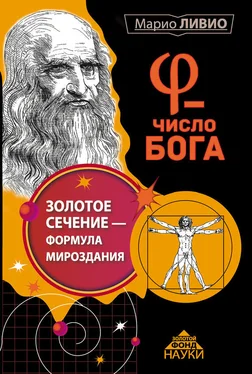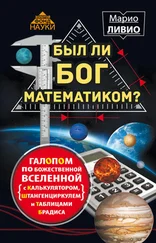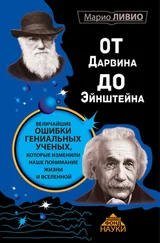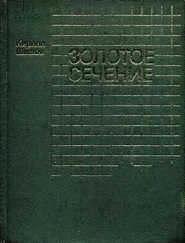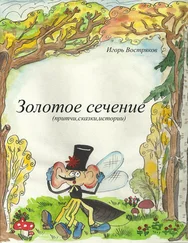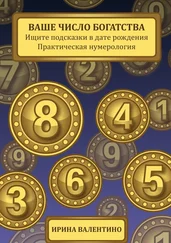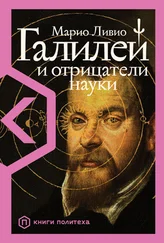2 × 3 × 5 × 7 × 11 × … × P + 1.
Согласно первоначальному предположению, это должно быть не простое, а составное число, поскольку оно, очевидно, больше Р , а мы решили, что Р – самое большое простое число. Следовательно, это число должно делиться по крайней мере на одно из существующих простых чисел. Однако из его конструкции следует, что если мы разделим его на любое простое число вплоть до (и включая) Р , получится остаток 1. А следовательно, если бы это число и в самом деле составное, оно должно делиться на какое-то простое число больше Р . Однако это предположение противоречит первоначальному утверждению, что Р – самое большое простое число, и мы, таким образом, доказали, что простых чисел бесконечно много.
Только пустые, ограниченные люди не судят по внешности. Подлинная тайна жизни заключена в зримом, а не в сокровенном…
О. Уайлд (1854–1900) (
Пер. М. Абкина )
Большинство книг и статей из этого списка – популярные, а не специальные. Те немногие, которые можно отнести к специальной литературе, отобраны за какие-то особые качества. Кроме того, я отобрал несколько веб-сайтов, где можно найти интересный материал.
1. Прелюдия к числу
Ackermann, F. “The Golden Section”, Mathematical Monthly, 2 (1895): 260–264.
Dunlap, R. A. The Golden Ratio and Fibonacci Numbers. Singapore: World Scientific, 1997.
Fowler, D. H. “A Generalization of the Golden Section”, Fibonacci Quarterly, 20 (1982): 146–158.
Gardner, M. The Second Scientific American Book of Mathematical Puzzles & Diversions. Chicago: University of Chicago Press, 1987.
Ghyka, M. The Geometry of Art and Life. New York: Dover Publications, 1977.
Grattan-Guinness, I. The Norton History of the Mathematical Sciences. New York: W. W. Norton & Company, 1997.
Herz-Fischler, R. A Mathematical History of the Golden Number. Mineola, NY: Dover Publications, 1998.
Hoffer, W. “A Magic Ratio Occurs Throughout Art and Nature”, Smithsonian (December 1975): 110–120.
Hoggatt, V. E., Jr. “Number Theory: The Fibonacci Sequence”, in Yearbook of Science and the Future. Chicago: Encyclopaedia Britannica, 1977, 178–191.
Huntley, H. E. The Divine Proportion. New York: Dover Publications, 1970.
Knott, R. http://www.mcs.surrey.ac.uk/Personal/ R. Knott/Fibonacci/fib.html.
Knott, R. http://www.mcs.surrey.ac.uk/Personal/ R. Knott/Fibonacci/fibnet2.html.
Markowski, G. “Misconceptions about the Golden Ratio”, College Mathematics Journal, 23 (1992): 2–19.
Ohm, M. Die reine Elementar-Mathematik. Berlin: Jonas Veilags-Buchhandlung, 1835.
Runion, G. E. The Golden Section. Palo Alto: Dale Seymour Publications, 1990.
2. Гаммы и пентаграммы
http://search.britannica.com/search?query=fibonacci.
Barrow, J. D. Pi in the Sky. Boston: Little, Brown and Company, 1992.
Beckmann, P. A History of π. Boulder, CO: Golem Press, 1977.
Boulger, W. “Pythagoras Meets Fibonacci”, Mathematics Teacher, 82 (1989): 277–282.
Boyer, C. B. A History of Mathematics. New York: John Wiley & Sons, 1991.
Burkert, W. Lore and Science in Ancient Pythagoreanism. Cambridge, MA: Harvard University Press, 1972.
Conway, J. H., and Guy, R. K. The Book of Numbers. New York: Copernicus, 1996.
Dantzig, T. Number: The Language of Science. New York: The Free Press, 1954.
de la Füye, A. Le Pentagramme Pythagoricien, Sa Diffusion, Son Emploi dans le Syllaboire Cuneiform. Paris: Geuthner, 1934.
Guthrie, K. S. The Pythagorean Sourcebook and Library. Grand Rapids, MI: Phanes Press, 1988.
lfrah, G. The Universal History of Numbers. New York: John Wiley & Sons, 2000.
Maor, E. e: The Story of a Number. Princeton, NJ: Princeton University Press, 1994.
Paulos, J. A. Innumeracy. New York: Vintage Books, 1988.
Pickover, C. A. Wonders of Numbers. Oxford: Oxford University Press, 2001.
Schimmel, A. The Mystery of Numbers. Oxford: Oxford University Press, 1994.
Schmandt-Besserat, D. “The Earliest Precursor of Writing”, Scientific American (June 1978): 38–47.
Schmandt-Besserat, D. “Reckoning Before Writing”, Archaeology, 32–33 (1979): 22–31.
Singh, S. Fermat’s Enigma. New York: Anchor Books, 1997.
Stanley, T. Pythagoras. Los Angeles: The Philosophical Research Society, 1970.
Strohmeier, J., and Westbrook, P. Divine Harmony. Berkeley, CA: Berkeley Hills Books, 1999.
Turnbull, H. W. The Great Mathematicians. New York: Barnes & Noble, 1993.
von Fritz, K. “The Discovery of Incommensurability of Hipposus of Metapontum”.
Annals of Mathematics, 46 (1945): 242–264.
Wells, D. Curious and Interesting Numbers. London: Penguin Books, 1986.
Wells, D. Curious and Interesting Mathematics. London: Penguin Books, 1997.
3. В пирамиде, к звездам обращенной
Beard, R. S. “The Fibonacci Drawing Board Design of the Great Pyramid of Gizeh”, Fibonacci Quarterly, 6 (1968): 85–87.
Burton, D. M. The History of Mathematics: An Introduction. Boston: Allyn and Bacon, 1985.
Doczi, O. The Power of Limits. Boston: Shambhala, 1981.
Fischler, R. “Théories Mathématiques de la Grande Pyramide”, Crux Mathematicorum, 4 (1978): 122–129.
Fischler, R. “What Did Herodotus Really Say? or How to Build (a Theory of) the Great Pyramid”, Environment and Planning B, 6 (1979): 89–93.
Gardner, M. Fads and Fallacies in the Name of Science. New York: Dover Publications, 1957.
Gazalé, M. J. Gnomon. Princeton, NJ: Princeton University Press, 1999.
Gillings, R. J. Mathematics in the Time of the Pharaohs. New York: Dover Publications, 1972.
Goff, B. Symbols of Prehistoric Mesopotamia. New Haven, CT: Yale University Press, 1963.
Hedian, H. “The Golden Section and the Artist”, Fibonacci Quarterly, 14 (1976): 406–418.
Lawlor, R. Sacred Geometry. London: Thames and Hudson, 1982.
Mendelssohn, K. The Riddle of the Pyramids. New York: Praeger Publishers, 1974.
Petrie, W. The Pyramids and Temples of Gizeh. London: Field and Tuer, 1883.
Piazzi Smyth, C. The Great Pyramid. New York: Gramercy Books, 1978.
Schneider, M. S. A Beginner’s Guide to Constructing the Universe. New York: Harper Perennial, 1995.
Читать дальше
Конец ознакомительного отрывка
Купить книгу
